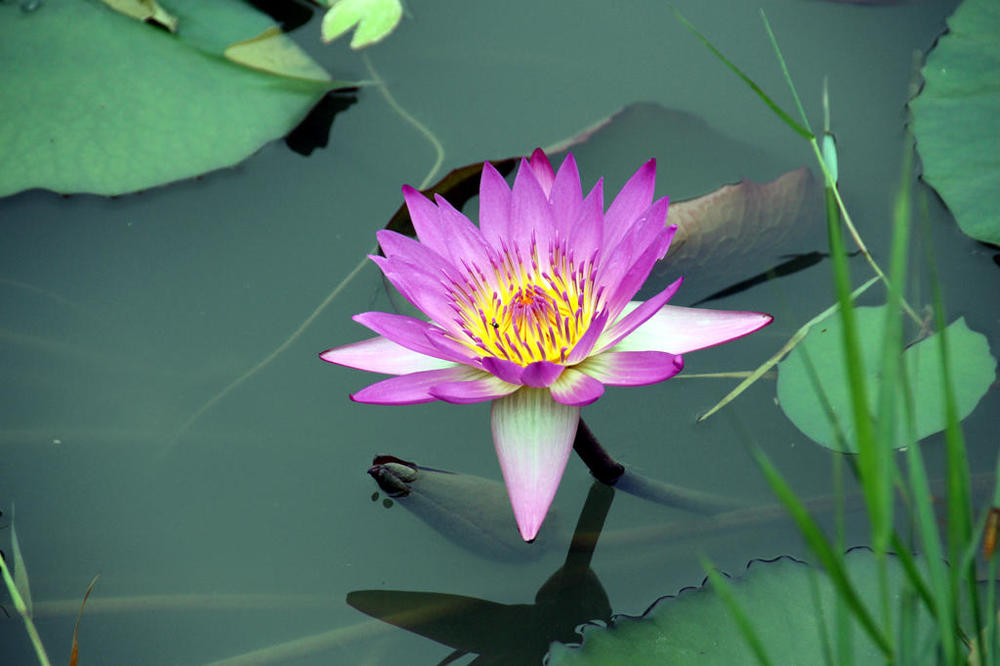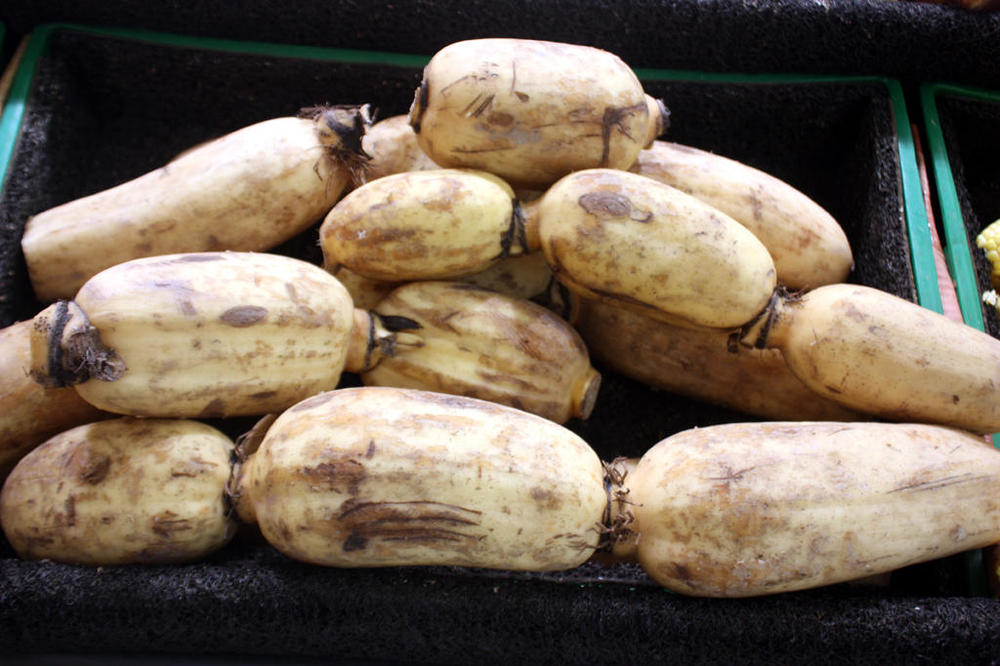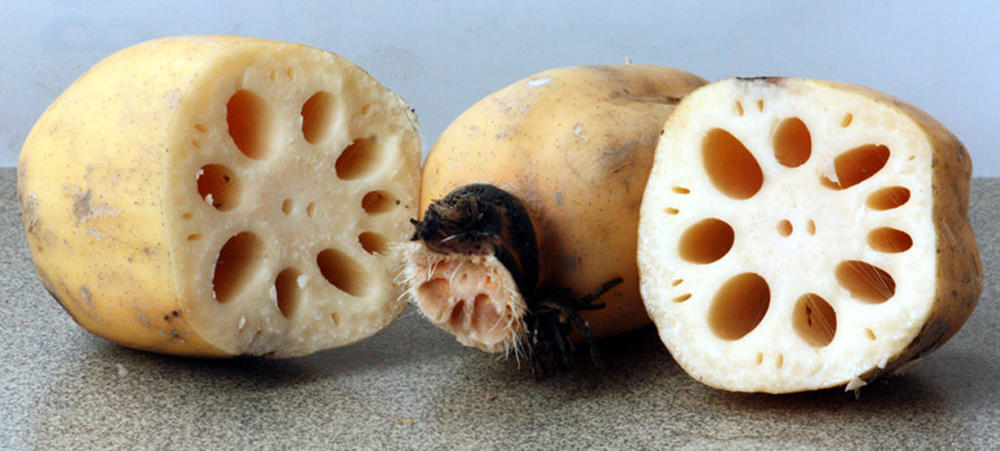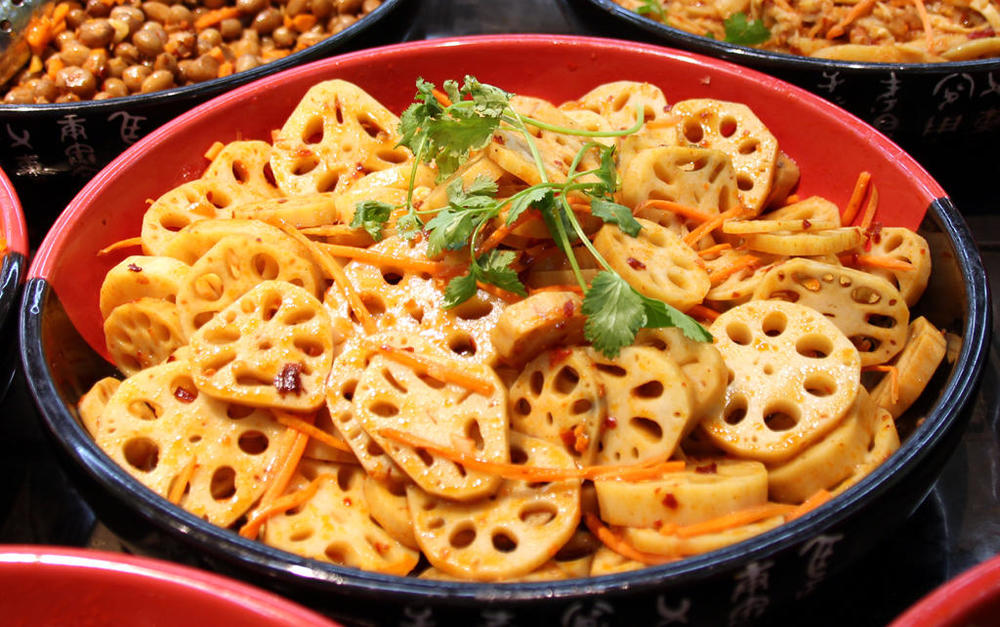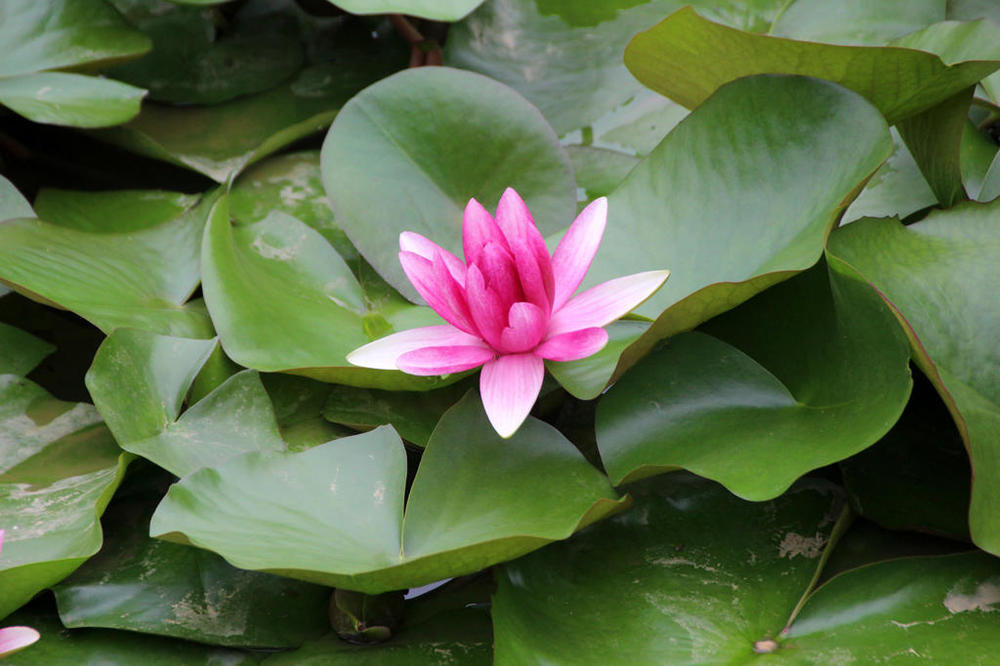Nelumbo nucifera
Trust the Chinese to invent a vegetable custom designed to be eaten with chopsticks. Well, part of it anyway.
The whole plant is edible and it has one of the most beautiful flowers. This baby is just outside my countryside home.
We are talking about the lotus plant, 莲 (Mand: lián; Cant: lin4). Everything you can see is edible and so is everything you can't.
The most used part is what is commonly referred to as 'lotus root', but is actually the rhizome of the plant. These are found in the sticky mud at the bottom of the pond. Extracting them is difficult, filthy manual labour. In Chinese, they are 莲藕 (Mand: lián ǒu; Cant: lin4 ngau5), although often only the final character is used, especially on menus.
These are usually sliced and fried (stir or deep fry) , steamed or boiled in soups and hot pots. They are also boiled with sugar syrup to make desserts. They are used in Chinese style "salads". Although they are edible raw, it is not advised to eat them that way as they are prone to infection by parasites which are killed even with light cooking. Anyway, the Chinese eat very little raw.
The holes make picking up cooked slices with chopsticks easy.
Spicy Lotus Root "Salad"
A more refined dish is to cut chunks, stuff the holes with meat etc. and deep fry them.
The starchy rhizomes are also dried and ground to make a flour used as a thickening agent for sauces etc.
When in season, the seed pods, 莲蓬 (Mand: lián péng; Cant: lin4 fung4) are sold on the streets for you to extract and eat the seeds, 莲子 (Mand: lián zi; Cant: lin4 zi2). I posted about them back in 2012. See here.
Finally, although the leaves and flowers are edible and used in Japan and Korea, I've never seen them used here in China, although the flower stamens are used to make 'lotus flower tea', 莲花茶 (Mand: lián huā chá; Cant: lin4 faa1 caa4).
Exit singing that old Gershwin hit:
I've got rhizome; I've got lotus....


